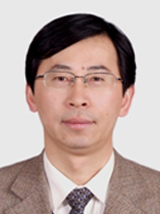俞书宏
| Name: | Yu Shu Hong (俞书宏) |
Address: | University of Science and Technology of China, 230026 Hefei, P. R. China | |
Tel: | 86-551-63603040 | |
Fax: | 86-551-63606266 | |
E-mail: | shyu@ustc.edu.cn | |
Home page: | http://staff.ustc.edu.cn/~yulab/ |
| EDUCATION AND RESEARCH EXPERIENCE |
| Shu-Hong YU completed PhD (Inorganic Chemistry) in 1998 from University of Science and Technology of China (USTC). From 1999 to 2001, he worked in Materials and Structures Laboratory, Tokyo Institute of Technology (TIT), as a JSPS (the Japan Society for Promotion of Science) Research Fellow, working with Prof. Masahiro Yoshimura. He was awarded an AvH (Alexander von Humboldt Foundation) Fellowship (2001-2002) in Max Planck Institute of Colloids and Interfaces, Germany, working with Professor Markus Antonietti and Dr. Helmut Cölfen. He joined University of Science and Technology of China and became a faculty member in School of Chemistry & Materials as a full professor in 2002. Currently, he is leading the Division of Nanomaterials & Chemistry, HFNL, and also acting as the Deputy Dean of the School of Chemistry & Materials, University of Science and Technology of China. He has authored and co-authored more than 178 refereed journal publications, 8 invited book chapters, and four patents. He serves at associate editor for international journal Mater. Res. Bull. (Elsevier), and the board members of journals CrystEngComm (RSC), Current Nanoscience, Chinese Science Bulletin (specially invited editor), The Open Nanoscience Journal, Open Nanoscience Letter, The Open Materials Science Journal, and Chinese Journal of Inorganic Chemistry. |
| RESEARCH INTERESTS |
1. | Bio-inspired synthesis, self-assembly and application of nanocomposites with high performances; |
2. | Polymer controlled crystallization and biomineralization of functional minerals; |
3. | Templated-directed synthesis and organization of multifunctional nanoparticles; |
4. | Synthesis of new inorganic-organic hybrid materials; |
5. | Optical, electronic, magnetic, and catalytic applications of nanostructured materials. |
| CURRENT RESEARCH PROJECTS |
1. | “Bio-inspired strategies for inorganic functional nanomaterials and inorganic-organic hybrids”, Key Project supported by the National Natural Science Foundation of China (NSFC, 50732006) (2008-2011). |
2. | “Nanostructured Modular Materials”, supported by “Partner-Group between Max Planck Society and Chinese Academy of Sciences”. (2005-2010). |
| REPRESENTATIVE PUBLICATIONS |
1. | Ming-Jun Hu, Yang Lu, Sen Zhang, Shi-Rui Guo, Bin Lin, Meng Zhang, Shu-Hong Yu*, High Yield Synthesis of Bracelet-like Hydrophilic Ni-Co Magnetic Alloy Flux-closure Nanorings, J. Am. Chem. Soc. 2008, 130(35), 11606–11607. |
2. | Yongjie Zhan, Shu-Hong Yu*, Necklace-Like Cu@cross-linked poly(vinyl alcohol) (PVA) core-shell Microncables, J. Am. Chem. Soc. 2008, 130(17), 5650-5651. |
3. | Xiao-Hui Guo, Shu-Hong Yu*, Guo-Bing Cai, A New Controlled Crystallization Approach in a Mixed Solution using an Artificial Peptide Type Block Copolymer as a Crystal Modifier: Highly Monodisperse CaCO3 Microspheres and Morphology Control, Angew. Chem. Int. Ed. 2006, 45(24), 3977-3981. |
4. | Shu-Hong Yu*, Helmut Cölfen, Klaus Tauer, Markus Antonietti, “Tectonic arrangement of BaCO3 nanocrystals into helices induced by a racemic block copolymer”, Nature Materials 2005, 5, 51-55. |
5. | Linbao Luo, Shu-Hong Yu*, Hai-Sheng Qian, Tao Zhou, “Large Scale Fabrication of Flexible Ag/Cross-Linked PVA Coaxial Nanocables by a Facile Solution Approach”, J. Am. Chem. Soc. 2005, 127, 2822-2823. |
相关文章
- 中国科大研发可闭环生物回收的介电薄膜2025-07-30 18:10:53
- 中国科大揭示富铁饲料显著增强竹鼠牙釉质抗损伤能力的机理2025-06-28 23:52:48
- 中国科大提出全速度冲击防护仿生梯度双重布利冈结构设计新策略2025-06-05 18:29:04
- 中国科大研制可调控颜色的高性能透波仿生结构材料2025-05-08 18:32:36
- 中国科大研制具有主动早期火灾预警功能的热致变色仿珍珠母结构材料2025-04-10 23:12:25
- 中国科大提出制备高强韧仿珍珠母结构陶瓷-金属复合材料的新策略2025-03-06 18:50:01


